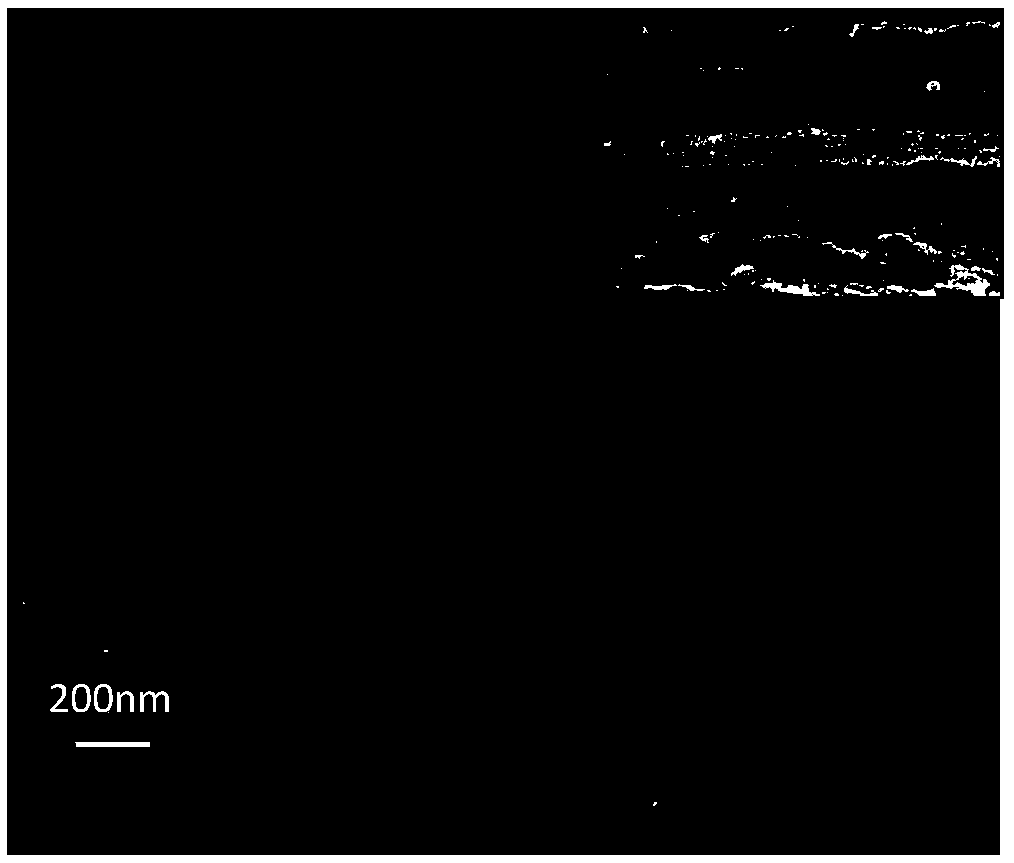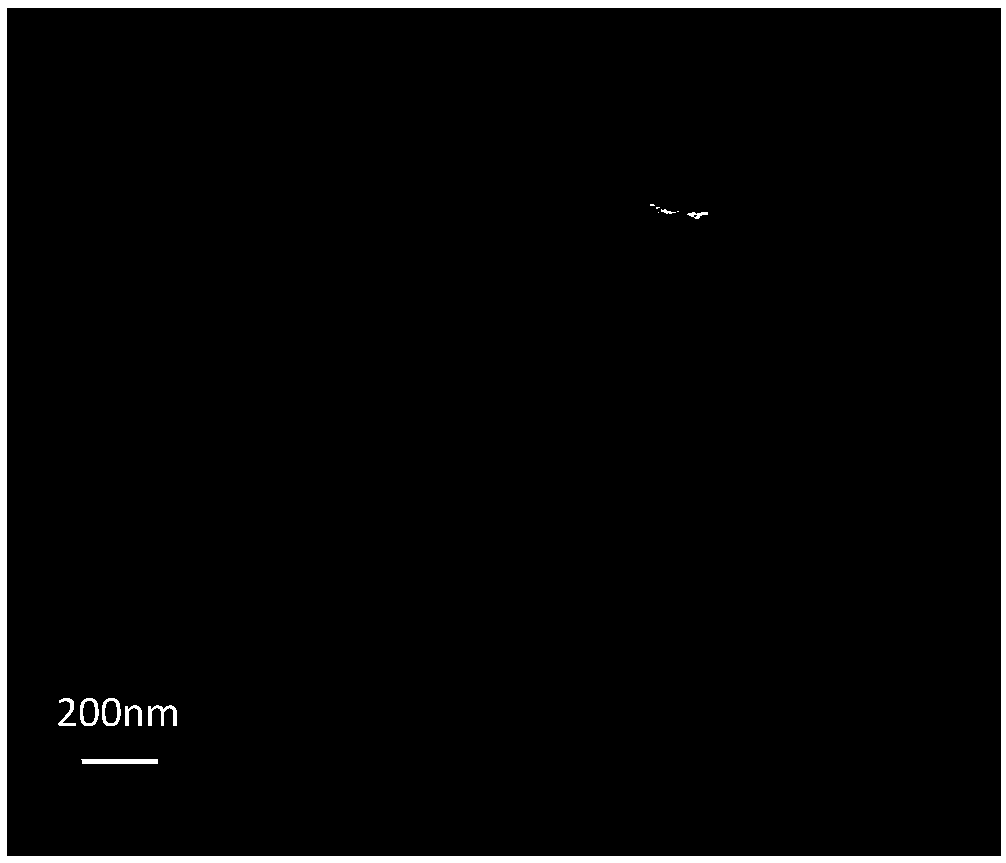Sulphur vacancy richened Ni3S2 nanorod oxygen evolution electro-catalysis material and preparing method and application thereof
An electrocatalytic material and nanorod technology, which is applied in the fields of nanotechnology, anodization, and nanotechnology for materials and surface science to achieve the effects of wide sources, high electrode oxygen evolution catalytic performance and strong stability
- Summary
- Abstract
- Description
- Claims
- Application Information
AI Technical Summary
Problems solved by technology
Method used
Image
Examples
Embodiment 1
[0038] A Ni rich in sulfur vacancies 3 S2 The preparation method of nanorod oxygen evolution electrocatalytic material comprises the following steps:
[0039] (1) Pretreatment of the substrate: Cut the pure nickel sheet into a rectangle of 3.5cm*0.5cm, the 1cm of the upper half is used as the clamping part, and the 2.5cm of the lower half is used as the actual use part, immersed in the electrolyte for anodic oxidation deal with. Put the trimmed matrix into acetone for 30 minutes of ultrasonic vibration, then put it into absolute ethanol for 30 minutes, and then soak it in absolute ethanol.
[0040] (2) Anodic oxidation of the substrate: Prepare an anodic oxidation electrolyte with deionized water as a solvent. The composition of the electrolyte is 1wt% ammonium fluoride, 80wt% phosphoric acid, and the rest is deionized water. The actual use part of the substrate pretreated in step (1) is immersed in the electrolyte, and the clamping part is connected with the anode electrode...
Embodiment 2
[0047] A Ni rich in sulfur vacancies 3 S 2 The preparation method of nanorod oxygen evolution electrocatalytic material comprises the following steps:
[0048] (1) The pretreatment of the substrate is the same as step (1) of Example 1.
[0049] (2) The anodic oxidation of the substrate is the same as step (2) of Example 1.
[0050] (3) After the anodic oxidation is completed, remove the sample, rinse it with deionized water, and then soak it in methanol for 3-8 hours for later use.
[0051] (4) Place the anodized sample in a porcelain boat, then place the porcelain boat in the middle of the quartz tube of the tube furnace, anneal at 350°C for 2 hours in an atmosphere with a ratio of oxygen to nitrogen of 4:1, and heat up The rate is 10°C / min, and the sample is taken out after cooling to room temperature.
[0052] (5) Sulfurize the sample after annealing by hydrothermal treatment. The solution composition is 0.05mol / L sodium sulfide, 0.1mol / L ammonium fluoride, and the rest...
Embodiment 3
[0056] A Ni rich in sulfur vacancies 3 S 2 The preparation method of nanorod oxygen evolution electrocatalytic material comprises the following steps:
[0057] (1) The pretreatment of the substrate is the same as step (1) of Example 1.
[0058] (2) The anodic oxidation of the substrate is the same as step (2) of Example 1.
[0059] (3) After the anodic oxidation is completed, remove the sample, rinse it with deionized water, and then soak it in methanol for 3-8 hours for later use.
[0060] (4) Place the sample after anodic oxidation in a porcelain boat, then place the porcelain boat in the middle of the quartz tube of the tube furnace, and then anneal for 2 hours at 350°C in an atmosphere with a ratio of oxygen to nitrogen of 3:2 , the heating rate was 10°C / min, and the samples were taken out after cooling to room temperature.
[0061] (5) Sulfurize the sample after annealing by hydrothermal treatment. The solution composition is 0.05mol / L sodium sulfide, 0.1mol / L ammoniu...
PUM
 Login to View More
Login to View More Abstract
Description
Claims
Application Information
 Login to View More
Login to View More - R&D
- Intellectual Property
- Life Sciences
- Materials
- Tech Scout
- Unparalleled Data Quality
- Higher Quality Content
- 60% Fewer Hallucinations
Browse by: Latest US Patents, China's latest patents, Technical Efficacy Thesaurus, Application Domain, Technology Topic, Popular Technical Reports.
© 2025 PatSnap. All rights reserved.Legal|Privacy policy|Modern Slavery Act Transparency Statement|Sitemap|About US| Contact US: help@patsnap.com



